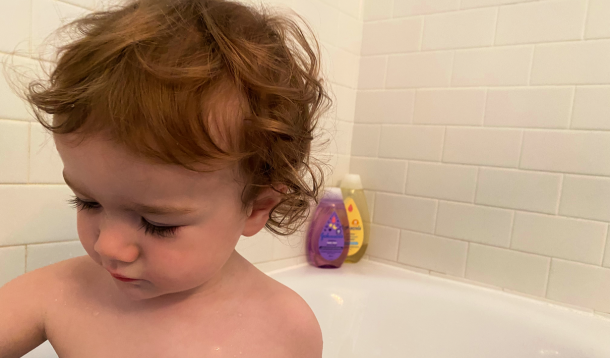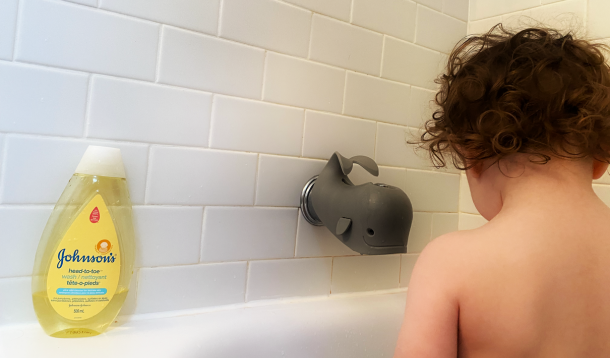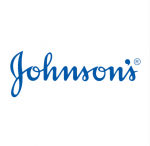
This summer, I learned why I need to pay more attention to the ingredients in the products I put on my baby’s skin.
When we packed up to go on vacation this summer, to reduce the piles of baby paraphernalia we bring with us, we decided to pick up diapers and wipes on the way to the cottage. When we got to the store, our usual brand of nighttime diapers wasn’t there, so I grabbed another brand in his size. No biggie, right?
Three days into our eight-night stay, my son woke with the most vicious diaper rash I’d ever seen. It cleared up a few days after we returned home…after we had resumed the use of our regular nighttime diapers.
Sebastian, who is 20 months old and about to be a big brother, has sensitive skin. We have to be careful what products we use on him. He’s also had bad reactions to a few products we received as gifts, so we’re more cautious than ever when picking up products for him. I diligently read the labels of his bath time products and I look for language like “formulated for baby” or “for sensitive skin.”
We now only use products specially formulated for delicate baby skin on him! We have a small collection of products we know work and we’re super careful about introducing anything new. We’ve been using Johnson’s Head-to-Toe Wash since his very first bath and it remains our go-to product. If it ain’t broke, why mess with it?

Since graduating to the toddler room at daycare, Sebastian often comes home covered in marker, paint, or other mysterious things, he requires a good clean-up before bed. We give him a quick, lukewarm bath using the Head-to-Toe Wash and follow it up with Johnson’s Baby Lotion – which smells like heaven, might I add. So much so, I keep a bottle of the Lotion in my bedroom to put on my own skin at night!

But… my curiosity got the best of me. I had to know: what are the ingredients in these products? So, I popped over to Google and typed in “ingredients in Johnson’s baby wash.” It took me to their Ingredient Transparency Tool on the product page which highlights every ingredient in the wash. There are also helpful descriptions of what each ingredient is and why they’re beneficial for baby’s skin. This kind of transparency is impressive. Nothing hidden. Nothing scary. That’s precisely why you’ll always find Johnson’s in all our tubs… and why I have peace of mind when using these products on my kids (or myself!)
Since knowledge is power, I connected with pediatrician Dr. Stephanie Liu, also known as Life of Dr. Mom, to help me understand what the best ingredients are to look out for in baby’s hygiene products. This is what I learned:
Look for tell-tale, baby-friendly product labels.
Dr. Liu recommends products with labels like “hypoallergenic” or “for sensitive skin” as these have been tested and proven to be less likely to cause skin issues. I really love when products like the Johnson’s Head-to-Toe Wash include the “free-froms” on the bottle and that it’s formulated for delicate skin so I know it will be gentle on my little one’s developing skin.
Dr. Liu also recommends avoiding products with paragons, phthalates, sulphates, and dyes, and suggests always trying a skin patch test – for babies and adults alike.
Chemicals aren’t the enemy.
My husband works in the science and medical world, so he (thankfully) quickly recognizes chemicals and can help me decipher labels. With my oldest son, someone once told me that “if I can’t pronounce the word, it’s probably unhealthy,” but I quickly realized this was not the best advice.
For example, quercetin-3-galactoside, quercetin-3-glucoside, quercetin-3-rhamnoside, catechin, epicatechin, procyanidin, cyanidin-3-galactoside, coumaric acid, chlorogenic acid, gallic acid, and phloridzin all sound pretty terrifying but, in fact, these are some of the more common chemical ingredients of… AN APPLE.
Everything is made up of chemicals, so the idea that all chemicals are “bad” is silly and will cause you to avoid them for no reason. One great thing about Johnson’s Ingredient Transparency Tool, is that it breaks down each ingredient and those sometimes hard to pronounce words, so you can easily understand what all the jargon on the ingredient list means.
Baby’s skin is actually different from yours.
Dr. Lui explains that a baby’s skin barrier continues to develop until they’re about two years old.
While this doesn’t mean that my now-sensitive toddler is suddenly going to have skin that never flares up, his skin is still maturing and thickening. That’s why it’s so dang soft! To ensure we protect his skin, she confirmed that we’re doing the right thing by not bathing him daily, and by using clean and warm (not hot) water. Following bath time, Dr. Liu recommended gently patting him dry with a soft blanket or towel rather than rubbing, as this can be irritating to his skin.
At the end of the day, it’s important to keep in mind that our baby’s skin needs are as unique as they are. Take time to research and understand what’s really in the products you’re putting on their sensitive bodies. It’s the best thing you can do for them — and for you. XO

This article is sponsored by our friends at Johnson’s ®